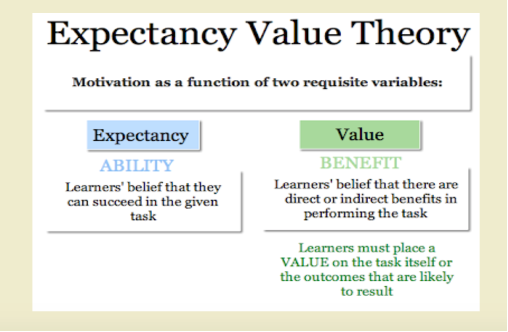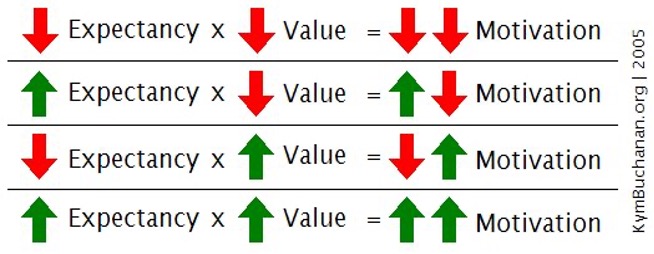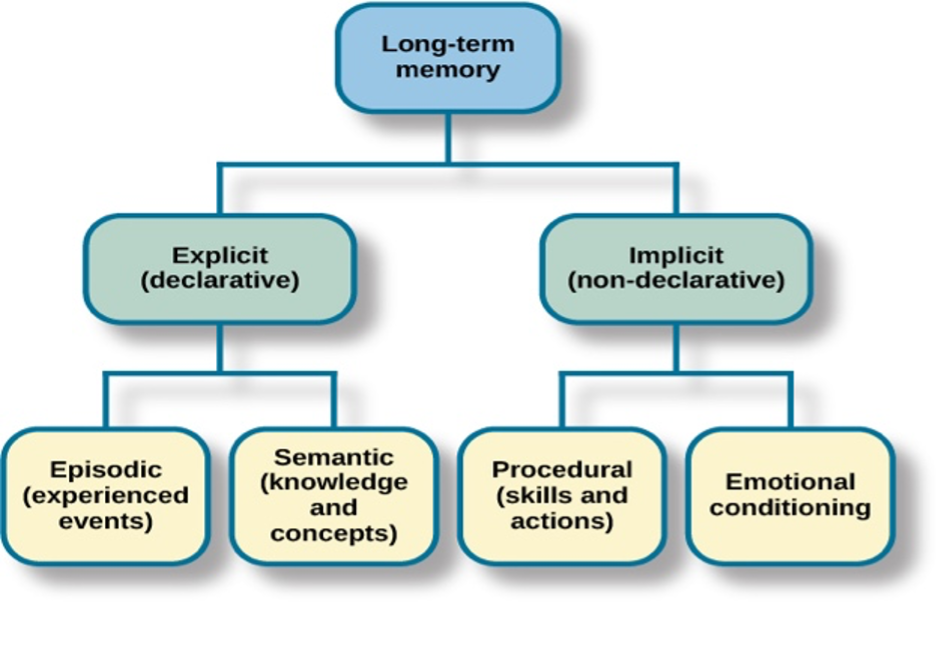Principles of Engagement
Strategies to Promote Equity and Engagement (Tanner 2013)
Using Technology to Promote Online Engagement
Principles of Engagement
In How to Make Your Classroom More Engaging: Advice Guide, Cavanagh (2019) argues that engagement is a critical first step for student learning. She outlines four principles of engagement under which classroom strategies and research are organized. While "active learning" might be expected as a stand-alone principle, Cavanagh (2019) believes that getting your students actively involved in the learning process (rather than remaining passive) is central to an engaging classroom. Therefore, active learning is embedded within each of the principles.
Principle 1: Cognitive resources are limited – Tap into emotions and lived experiences
-
Chunking content into shorter time periods, smaller learning segments, and using emotional hooks to tap into episodic memory will help reduce cognitive load.
-
Stimulate interest, curiosity, and participation.
-
Tap into students’ emotions and lived experiences:
-
Brief lesson teasers
-
Stories or images
-
Music/Songs
-
Provocative questions
-
Current events/headliners
-
Demonstrations
-
Videos
-
Case studies or simulations
-
-
An example might be to present Public Health students with the Flint Water Crisis:
-
The Flint water crisis is a public health crisis that started in 2014, after the drinking water source for the city of Flint, Michigan was changed. In April 2014, Flint changed its water source from treated Detroit Water and Sewerage Department water to the Flint River.
-
-

-
What questions, issues, or perspectives come to mind as you analyze this situation?
-
What do you know about the water here in the Central Valley of California? What, if any, challenges exist and why?
-
Based on what you learned in researching the Flint Water Crisis, what recommendations might you have for Californians?
Principle 2: Your persona and performance matter
Your presence makes a difference in student engagement.
-
Students report choosing their major based on taking introductory courses with, particularly dynamic professors – help your student fall in love with the subject.
-
Research indicates that the instructor’s enthusiasm is contagious and helps predict variables like student motivation in the course.
-
Take risks and try new things. Interject current events that make the material more relevant or that add value to the discipline.
-
Be explicit about the performance expectations and the value of this material.
-
Build academic supports to help build confidence and expectancy levels.

-
Motivation and/or levels of interaction with the course content is driven by one's expectations to succeed and the value the individual places on the material.

Principle 3: We are intensely social creatures, motivated by community.
Learning is a social act. Discussions and collaborative work, whether asynchronous or synchronous, help students process, elaborate on, and make connections between and among new information and prior knowledge (Ambrose, et al., 2010).
-
Learn/use student names
-
Provide opportunities for everyone to contribute – jigsaw content & assign roles
-
Work as a class on a shared project; perhaps replace final exam (e.g., create a children’s book on the topic). Utilize the arts and humanities to build interest and variety.
-
An example asynchronous discussion board for Microbiology might be:

Principle 4: Tap into episodic memory with stories, pictures, and music.
Of all the types of memory, episodic is said to be the most powerful in terms of deep, lasting memory for retrieval purposes. Episodic memory is a type of declarative memory that allows you to consciously recall personal experiences and specific events that happened in the past (Tulving, 2002).

-
The stories you tell in your classroom can be about your own intellectual path, your research/fieldwork, about people who have lived through different historical eras, about patient case histories. Whatever their type or shape, tell stories.
-
Your students also have relevant stories to tell – inviting these stories demonstrates to students your interest in them and their potential for contribution to your course and the field (Cavanagh, 2019).
-
An example of taping into episodic memory is: Lesson: Word Choice Matters!!
-
In the Aftermath of Katrina (2005), these two photographs appeared on Yahoo News and other Internet news outlets on September 2nd, 2005. Analyze the socio-political impact of journalists choosing the words “looting” over “finding.”
-

References
-
Ambrose, S. A., Bridges, M. W., DiPietro, M., Lovett, M. C., & Norman, M. K. (2010). How learning works: 7 research-based principles for smart teaching. San Francisco, CA: Jossey-Bass.
-
Cavanagh, S.R. (2019). How to make your teaching more engaging: Advice guide. Chronicle of Higher Education. Retrieved on Aug 10, 2020, at https://www.chronicle.com/article/how-to-make-your-teaching-more-engaging
-
Tulving, E. (2002). Episodic memory: From mind to brain. Annual Review Psychology, 53:1–25. Retrieved July 16, 2021, at annualreviews.org
Strategies to Promote Equity and Engagement (Tanner 2013)
- Wait time: this simple strategy gives students time to think and increases the number of students that verbally participate in class. After posing a challenge question take a sip of water, let the silence linger, count to 60 (it's amazing how long this minute feels). Let your students know you are happy to wait and you will be surprised to see the participation rise.
-
Allow students time to write: Offer quick writes, 1-minute papers, or just time to reflect on learning helps students process their thoughts. This is a scaffolding step to include in addition to wait time to capture students who need more time to think.
-
Think-Pair-Share: This is an incredible strategy for any class of any size and it only takes a few minutes. After posing a thought question or problem, give students a minute or two to think on their own, then have them pair with a student nearby and share thoughts. Have them identify points of agreement or misalignment. In some cases, this can lead to a large classroom discussion. This is the simplest strategy to increase classroom equity as a "Think-Pair-Share" provides students time to verbalize their thoughts, promotes comparison of ideas among peers, and boosts participation and collaboration rather than competition.
-
Do not try to do too much: Most faculty attempt to do it all and this will inevitably lead to instructor burnout and student confusion. Choose a few things to implement and intentionally integrate them. Determine which concepts or skills are most difficult to learn, and choose techniques that will address those needs instead of trying everything.
-
Hand raising: Be explicit about the use of hand raising in class and create class norms around its use. Ask students who have not participated to raise their hands only.
-
Multiple hands, multiple voices: To encourage the voice of more students in the class, wait for multiple hands and call on the third. In a large class, encourage a "one and done" policy where once a student offers an answer they are done for the day. Remember, questions are always encouraged!
-
Random calling: Use index cards or popsicle sticks to write students names (this is also a great trick to learn names) and cold-call on students. Make sure to establish expectations about the use of random calling and give students an opportunity to pass if they are uncomfortable. This keeps students on their toes and listening. Once a student has participated, put their name in a discard pile until next time.
-
Assign roles for groups: When creating group work, make sure to assign roles (e.g., reported, facilitator, time-keeper, note-taker, etc.). Rotate roles and base them on visible characteristics (e.g., length of hair) or "get-to-know-you" information (e.g., who woke up the earliest). This is a simple strategy to improve group work and create equitable opportunities in group dynamics.
-
Whip (around): In small classes (< 30) have everyone share out their thoughts in 30 seconds or less.
-
Monitor student participation: Track who is participating and intervene if the class is being dominated by a few students. Scaffold wait time, multiple hands, etc. to encourage non-participants to speak up. In larger classes with TAs, have the TAs monitor the participation and ask them to help facilitate this. In small classes, keep track mentally.
-
Learn student names: This has a big impact on students, make an effort. In large classes where is may not be possible to remember everyone (> 100) have access to students' names during class for random-calling or to identify students as they participate.
-
Integrate culturally diverse and relevant examples: Create moments in class that students can identify with. Make it as relatable as possible.
-
Work in stations or small groups: Make larger classes smaller by creating groups. See our section on group work for more details on how to do this.
-
Use varied active-learning strategies: The "best" way to teach equitably is by providing multiple experiences for student learning. This way there is no one way to learn and students will connect with different learning techniques. See our section on active-learning for more examples.
-
Be explicit about promoting access and inclusion for all students: Allow this conversation to thread the class. Tell students why you are making the choices you are making. Share the effects and outcomes. Include students in your thinking about classroom inclusion.
-
Ask open-ended questions: One way to quickly have students check out is to ask "Are there any questions?" and yet this question is asked all the time. Develop questions that trigger thought and disagreement, questions that have multiple answers, or questions that are yet to be answered in the field. Ask students for their opinion.
-
Do not judge responses: Remain neutral when listening to students. If they are expressing a misconception, thank them for their contribution, ask others to build on the idea or offer other suggestions, and return to the misconception thoughtfully. Never penalize a student for sharing an idea, even if it is inaccurate.
-
Use praise with caution: By exclaiming praise for one student's idea may discourage others from offering other points. Praise is good, but be thoughtful about when to offer it.
-
Establish classroom community norms: Consider building these with students, establish them early, and constantly remind students they exist. Common group norms include the following: “Everyone here has something to learn.” “Everyone here is expected to support their colleagues in identifying and clarifying their confusions.” “All ideas shared during class will be treated respectfully.”
-
Teach them from the moment they arrive: The first day of class is essential. Learning can happen in a variety of ways, and so modeling learning for them all the time will help them see how often they have a chance to learn. Teach them about the process of learning "metacognition", even if for 5 minutes.
-
Collect assessment evidence from every student, every class: This sounds laborious, but it is valuable and can be automated with technology quite easily. Ask students to complete pre-assignment assessments and ask them the same questions at the end of the class to assess differences or similarities in their learning. Build online quizzes and surveys for metacognition, participation, and concept check-ins. This is also a wonderful way to amplify critical content, increase formative assessments, and collect data for education research.
References
-
Tanner, Kimberly D. "Structure matters: Twenty-one teaching strategies to promote student engagement and cultivate classroom equity." CBE—Life Sciences Education 12.3 (2013): 322-331.
Using Technology to Promote Online Engagement
Synchronous Engagement
Zoom is a great tool for synchronous engagement and provides many useful functions like:
-
Chat Feature – students enter a one-liner upon entry and exit - instructor provides a prompt (e.g., what new concept do you understand clearly, and which is still unclear?; In your own words, enter a brief description of ….)
-
Using icons in the chat room – encourage students to use thumbs up or thumbs down in response to a check for understanding.
-
-
Breakout Rooms – for group work/discussion
-
Polling Feature – Works much like an embedded quiz; clicker questions, or other periodic engagement activities.
Asynchronous Engagement
CatCourses provides a good place to put asynchronous content that students can access at their convenience. Some ways of engaging students in CatCourses include:
-
Keep an eye on Who’s Slipping Away
-
Within CatCourses, you can use course analytics to monitor student engagement in the course. Using Analytics in CatCourses. This is critical now that we are in a remote environment. Pay particular attention to students who have slipped away, are inactive, and/or have failed to turn in assignments.
-
See our guide to Mid-Semester grades and interventions for some template emails and advice on connecting with students in need of support.
-
Provide guidelines with due dates (or by end of the semester) for getting missed assignments turned in. The change to remote instruction takes everyone some time to acclimate. If your students are struggling to submit assignments on time, consider removing penalties for late work or extending due dates.
-
Make sure students understand that even if they have opted for a P/NP grade, they must complete all work AND do so at a C- level. Incomplete work or failure to complete assignments and exams will automatically result in a zero grade – this could significantly decrease overall points in class, and therefore, one’s ability to pass the course.
-
-
Discussion Board Feature – This actually provides students with more time for reflection and the development of their thoughts/responses.
-
10 Tips for Effective Online Discussions | Educause Review - Tips to help educators ensure that online discussions are engaging and beneficial for students. Explore the list here
-
-
Group assignments can be used for small group work like problem-solving. Capturing group work on a GoogleDoc can be useful
Case Studies and Examples from Disciplines
-
51 Student Exercises from Sociology Through Active Learning
-
Sociology Activity Examples | Adaptable for Online
-
Explore these sociology exercises from Stanford Sociology
-
-
Digital Labs and Simulations for Science and Math
-
An online resource that generates interactive simulations. Access it here.
-
From physics to biology, and beyond, this website provides information regarding digital labs and simulations. Read it here.
-
UCLA has created a curated list of resources for migrating labs to an online format. Read it here.



